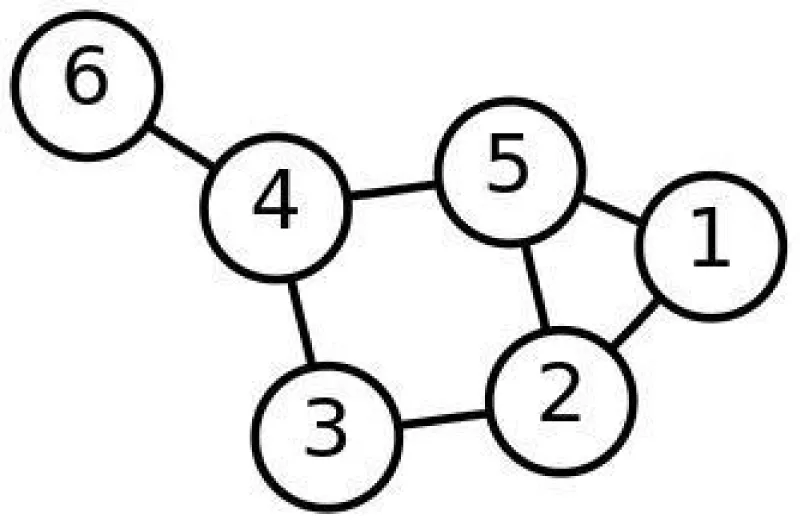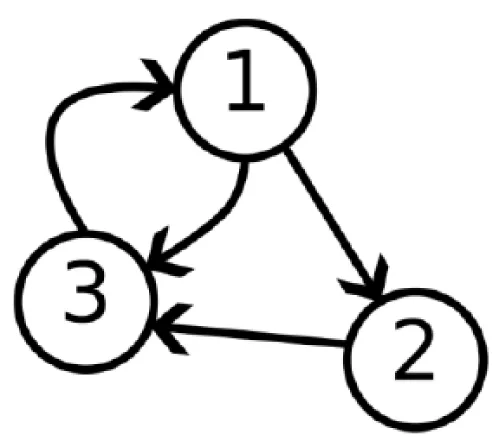More Information
Submitted: September 11, 2025 | Approved: September 23, 2025 | Published: September 24, 2025
How to cite this article: Maksoed WH. Laplacian on Fractals in Techno-econophysics: Percolation and Exergy Approach. Int J Phys Res Appl. 2025; 8(9): 285-287. Available from:
https://dx.doi.org/10.29328/journal.ijpra.1001137
DOI: 10.29328/journal.ijpra.1001137
Copyright license: © 2025 Maksoed WH. This is an open access article distributed under the Creative Commons Attribution License, which permits unrestricted use, distribution, and reproduction in any medium, provided the original work is propeRLy cited.
Keywords: Fractal fluctuations; Emergent unit; Laplace transform; Techno-econophysics; Fibonacci sequence
Laplacian on Fractals in Techno-econophysics: Percolation and Exergy Approach
Widastra Hidajatullah Maksoed*
Prodi of Physics, University of Indonesia, 40122, Indonesia
*Address for Correspondence: Widastra Hidajatullah Maksoed, Prodi of Physics, University of Indonesia, 40122, Indonesia, Email: [email protected]
Ever concluded that fractal fluctuations exhibit quantum-like chaos. Then provided a configurative description of a repeating unit [from gather (unit) to transform (emergent unit)] of four conservation laws & forces in the fractal organization of nature. To prove that the Fibonacci sequence is performed through Laplacian matrix normalization, which the techno-econophysics realm assumed as financial innovation.
Fractals are the latest development in statistics [1]. The larger scale fluctuation consists of a smaller scale fluctuation identical in shape to the larger scale. Fractal systems extend over many scales and so cannot be characterized by a single characteristic average number. Ever stated, the Gaussian distribution will not be applicable for the description of fractal data sets.
Fractal fluctuations exhibit quantum-like chaos. Free quantum gauge theory is equivalent to the assumption about the log-normal walks of asset prices [2]. This allows us to map the theory of the capital market onto the theory of a quantized gauge field interacting with a money flow field.
Gauge theory of arbitrage & repeating units
In finance, the arbitrage pricing theory is a multi-factor model for asset pricing that relates various macro-economic risk variables to the pricing of financial assets, proposed by economist Stephen Ross in 1976. Arbitrage is an investment strategy wherein Investors simultaneously buy and sell securities in different markets to take advantage of a price difference and generate a profit.
There are three types of arbitrage: pure arbitrage, merger arbitrage, and convertible arbitrage.
In the general case of Gauge Theory of Arbitrage [2], the consideration maps the capital markets onto Quantum
Electro Dynamics, I.e, a quantum system of particles with positive (securities) and negative (“debts”) charge which interact with each other through an electromagnetic field (gauge field of arbitrage). Entering positive charges and leaving negative ones screens up the profitable fluctuation and restores the equilibrium in the region where there is no arbitrage opportunity anymore.
Further, a General Systems model of the Universe is presented, based on a fractal algorithm [3]. The table depicts the distinction between structural terms: unit-pair-group-emergent unit & dynamic terms: gather-repeat-share-transform [3].
Laplacian matrix on fractals
The Laplacian matrix is a discrete analog of the Laplacian operator in multivariable calculus and serves a similar purpose by measuring to what extent a graph [associated to a function] differs at one vertex from its values of nearby vertices, whereas the Laplace operator or Laplacian is a differential operator given by the divergence of the gradient of a scalar function on Euclidean space.
Between the Laplacian matrix and the Laplace operator, a “directed graph” was introduced, with an edge probability matrix.
The matrix equation, where L is the Laplacian matrix, is:
L = D – A; D is “degree matrix” & A is “adjacency matrix”.
Let us distinguish between “simple graph/undirected graph” and “directed graph”.
For “simple graph”, the element of the Laplacian matrix here is related to structural terms unit-pair-group-emergent unit, and we saw a series of numbers consisting of the dimension of Euclidean space.
A “directed graph” can adopt a stochastic or random walk matrix because it includes a probability matrix.
The random walk normalized Laplacian matrix equation is:
LRW = I – D+A, where I is the identity matrix.
To share the group/field and larger integers than dimension 3, tried to describe how the Laplace transform & Fibonacci sequence performed in fractals, which are real.
A “directed graph” is defined in the matrix of the Laplacian operator, and the Laplacian matrix of a directed graph is generally non-symmetric, thus a needed adjacency matrix to turn a directed graph into a simple graph, in which a symmetrical Laplacian normalized matrix is used for its random walk type.
It solves the problem of repeating units in complex systems as well, where the study of normalized Laplacian matrices of fractal trees [4] described how various structural properties affect the dynamical processes. About the Fibonacci sequence in which each number is the sum of preceding ones, the Laplacian matrix is always at least integer & real as it performs fractals, and the Laplace transform is an integral transform that converts a function [or graph] of a real variable to a function of a complex variable.
On probability matrix of laplace transform
Between the probability matrix and Laplace transform (we intend that it could be related to ‘new emergent unit’), there exists a ‘state-transition matrix’ [5].
If (sI – A)-1 is called the resolvent of A, then Ф(t) = Lapl-1 [(sI – A)-1]
Called the state transition matrix, which maps the initial state to the state at time t
X(t) = Ф (t) x (0).
If the series converges, the series expansion of ‘reoslvent’ is (sI- A)-1 = (1/s) [1- (A/s)]-1 = (I/s) + (A/s2) + (A2/s3) + ….
Define ‘matrix exponential’ as
eM = 1 + M + (M2/2!) +…
In which e is 2.718,
so
Ф t) = Lap-1 [(sI- A)-1] = etA.
To the probability of occurrence, in this case, is the occurrence of Fibonacci numbers in serial numbers depicting structural terms:
Unit-pair-group-emergent unit inherent with dynamic terms: gather-repeat-share-transform, we express as
(Prob)n = τ-4n
Where τ2 = a = (1/k) = 2.62 and a = Feigenbaum’s constant [1], then we can conclude the Laplace transform of the repeating unit of four conservation laws & force are fractals and also perform Fibonacci numbers in its probability matrix.
Percolation models & exergy measure
Many studies have used physical application to economic and social problems. Percolation shows a phase transition from a diffusion to a no-diffusion regime (phase), with increasing price.
A comprehensive computer simulation relates the occurrence of extreme market share on a square lattice to exhibiting self-organized criticality toward the usual percolation threshold [6]. Furthermore, fractal fluctuations can be concluded to be related to quantum-like chaos in economic crisis, autocatalytic percolation [7].
Exergy analysis is a developed concept of energy efficiency optimized processes, which includes optimization measures such as making efficient use of energy. Besides energy balance, exergy has been recently considered as a practical thermodynamic method for a system’s energy evaluation [8].
Fractals in techno-econophysics
Let F be a set of contraction maps in a post-critical finite fractal. There is a defined μ called a self-similar measure in K, where K is any given self-similar set [9]. In [10], any measure of correlation, which measures the amount of variation in one variable that can be expressed by other variables, and probability is a measure of the likelihood of an event occurring. For the Laplacian matrix, to represent a random switching directed graph G, an edge probability matrix P is allocated.
In the hedge mechanism of asset management, techno- is considered from a financial innovation point of view.
It can be concluded that Laplacian fractals are also used in techno-econophysics. More precisely, fractal algorithm considering structural & dynamic properties can be approached through complex systems through probability & correlation measures.
- Selvam AM. Fractal fluctuations and statistical normal distribution. Fractals. 2009;17(3):333–49. Available from: https://arxiv.org/pdf/0805.3426
- Ilinski K. Physics of finance. arXiv [Preprint]. 1997. Available from: https://doi.org/10.48550/arXiv.hep-th/9710148
- Gowan JA. The Trinity: Space, Time, and Gravity [Internet]. [place unknown]: John A. Gowan; 2016 [cited 2025 Sep 23]. Available from: http://www.johnagowan.org/trintxt.html
- Julaiti A, Wu B, Zhang Z. Eigenvalues of normalized Laplacian matrices of fractal trees and dendrimers: Analytical results and applications. J Chem Phys. 2013;138(20). Available from: https://doi.org/10.1063/1.4807589
- Boyd S. Lecture 10: Solution via Laplace Transform and Matrix Exponential [Internet]. Stanford (CA): EE263 Autumn 2007–08; [cited 2025 Sep 23]. Available from: https://see.stanford.edu/materials/lsoeldsee263/10-expm.pdf
- Solomon S, Weisbuch G, de Arcangelis L, Jan N, Stauffer D. Social percolation models. Physica A. 2000 Mar 1;277(1–2):239–47. Available from: https://econpapers.repec.org/article/eeephsmap/v_3a277_3ay_3a2000_3ai_3a1_3ap_3a239-247.htm
- Cantono S, Solomon S. When the collective acts on its components: economic crisis autocatalytic percolation. New J Phys. 2010;12(7):075038. Available from: https://iopscience.iop.org/article/10.1088/1367-2630/12/7/075038
- Taheri K, Gadow R, Killinger A. Exergy analysis as a developed concept of energy efficiency optimized processes: The case of thermal spray processes. Procedia CIRP. 2014;17:511–6. Available from: https://www.researchgate.net/publication/269222096_Exergy_Analysis_as_a_Developed_Concept_of_Energy_Efficiency_Optimized_Processes_The_Case_of_Thermal_Spray_Processes
- Zhou 6. Available from: https://dspacemainprd01.lib.uwaterloo.ca/server/api/core/bitstreams/ca21e8d8-4fdf-4f3c-aab4-661ee9a2dd5e/content
- Maksoed WH. Techno-econophysics’ fractal fractal involvement of “helium nat gas” exergy. Hyperion Int J Econophys New Econ. 2024;16. Available from: https://scholar.google.com/citations?user=NKKxjgkAAAAJ&hl=en

